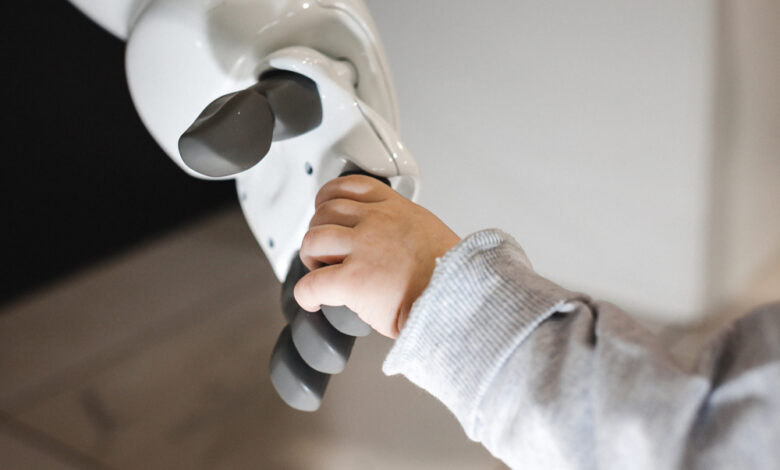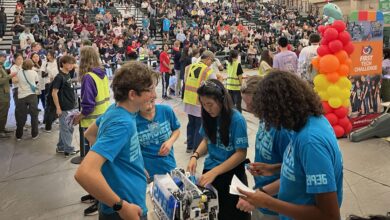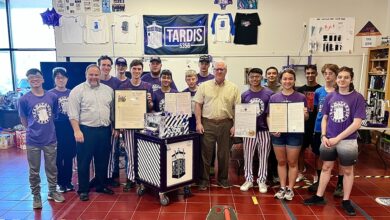These 4 Humanoid Robots Use Soft Touch to Hug or Connect with Humans

While robots with a human touch are still not a common sight, they are slowly appearing in public. For years, recreating the softness sensation of a person’s touch remained the ultimate technological challenge for humanoid robot scientists. Recent innovations effectively address these constraints, showing a glimpse of a future where robots can interact with humans in more advanced ways.
Humanoid Robots Are Far From Perfect
Robots have long been synonymous with cold, mechanical precision — soulless machines doing a set of predefined tasks. Incorporating human-like features, such as gestures and natural language processing, has revolutionized how humans interact with robots.
Researchers are now pushing the boundaries of robotics to develop machines that can better connect with humans through soft touch. Compared to other forms of non-verbal communication, touch primarily conveys emotions and can elicit a wide range of responses and even experiences. This development unlocks a new era of interaction driven by emotional intelligence.
The ability to replicate the nuances of touch also expands the range of tasks that today’s humanoid robots can perform. Several companies have developed robotic innovations with a widening range of applications.
Read More: 4 Robots That Look Like Humans
1. Toyota’s Soft Robot
With two elongated arms and a broad torso frame equipped with compliant materials and tactile sensors, Punyo displays advanced object manipulation skills that can help people with everyday tasks. The team at the Toyota Research Institute set out to improve whole-body manipulation in humanoids while maintaining balance.
“Punyo” translates to cute yet resilient — a fitting name for a soft, durable, interactive, and capable robot. The robot features soft limbs with internal sensors that allow it to conform with the objects it’s manipulating.
Its paws comprise of a single high-friction latex bubble and a high-precision camera that measures pattern deformities to appropriate the right amount of force based on the object. So, a soft item like a beach ball will require different pressure to hold the object, versus a hardened surface with a wooden box. Punyo can sense the variations and apply the right amount of grasping force.
2. Controlled Hugging Bots
Haptically intelligent robots at the Max Planck Institute for Intelligent Systems are taking soft touch in human-robot interactions to new heights with the ability to provide warm, affectionate hugs.
Dressed in a gray sweatshirt and a long purple skirt, HuggieBot 2.0 politely asks for hugs from human counterparts. If obliged, the robot prepares for a gentle embrace by inflating its chest and arms based on the person’s size. Attached sensors in the arms ensure the pressure is just right to achieve a warm, tight hug. HuggieBot can also sense if the person returns the hug, making the experience more realistic.
Machines capable of feeling and gently touching their human counterparts could have a wide range of applications, including physical therapy, training aid, and rehabilitation.
3. Softness Rendering Interface (SORI)
Researchers at École Polytechnique Fédérale de Lausanne (EPFL) in Switzerland have made great strides in simulating softness sensations for various robotic applications, including surgery and deep-water explorations.
SORI results from extensive research to improve tactile perception of softness in robots. The robots have motor-driven origami joints that can automatically adjust their flexibility or stiffness based on what they’re grasping.
A silicone membrane covers the joints and expands as air passes through, enabling SORI to recreate the softness of various surfaces. The choice of material is crucial, as silicone rubber is known for its rebound resilience — the ability to return to its original shape after compression.
4. Soft Robots Can Feel Things Without Sensors
Humanoid robots typically require numerous sensors to interact with their environment effectively. AMOLF Soft Robotic Matter Group engineers have developed soft actuators that can feel things without requiring built-in sensors. Instead, the researchers measured the internal air pressure needed to move the robot’s fingers when handling different objects.
This allows the robot to grip items with just the right amount of force, whether it’s an overripe tomato or a firm fruit still attached to the tree. In agriculture, these soft robot fingers can enhance workflows and shorten harvest times.
The Future Populated by Soft Touch Humanoid Robots
The humanoid robotics field is advancing rapidly, thanks in part to developments in various soft-touch technologies. These capabilities are expanding the scope of robotic use cases and enhancing interactions to convey more emotional nuances. While challenges remain, the potential applications are enormous, opening the door to more widespread adoption across various industries and reshaping how humans and robots work together in dynamic environments.
Read More: Humans and Our Alarming Fear of Robots
Article Sources
Our writers at Discovermagazine.com use peer-reviewed studies and high-quality sources for our articles, and our editors review for scientific accuracy and editorial standards. Review the sources used below for this article:



